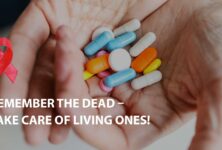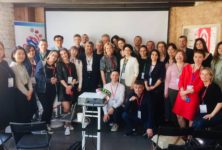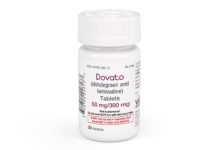“People, politics and power lie at the heart of the AIDS epidemic. How these intersect will continue to be critically important in achieving the agreed global targets and universal health coverage”.
Much has changed since the global HIV community convened at the previous International AIDS Conference in Durban in 2016. Advances in science have been significant, including widespread acceptance that HIV is untransmittable with an undetectable viral load, increased PrEP rollout, innovative treatment delivery methods and promising developments in cure and vaccine research. But while there have been success stories, prevention efforts continue to lag and new HIV infections are still on the rise among key populations and young women and girls. These groups continue to experience high levels of structural violence and stigma. Coupled with a rising tide of populism, questionable political commitment and leadership and declining financial resources, the HIV response is operating in a fragile environment. People, politics and power lie at the heart of the AIDS epidemic. How these intersect will continue to be critically important in achieving the agreed global targets and universal health coverage.
Supporting sustainability
Inform the global health agenda:
Silos in service delivery for co-infections, including STIs, TB and viral hepatitis, and co-morbidities remain. Breaking these down opens up under-utilized opportunities to improve health outcomes and scale up integrated, people-centred approaches within the framework of universal health coverage that could strengthen health outcomes for millions more. But to end these epidemics, access to quality and affordable essential medicines, diagnostics and vaccines for all will be critical. Non-communicable diseases like diabetes and hypertension will also require synergistic responses.
Scale up evidence-informed programming:
In the face of a growing “anti-science” agenda, including the expansion of the global gag rule, the role of science continues to be central. Programmes must be pragmatic, responding to individuals’ lived realities and addressing the local epidemic informed by quality data. Prevention programmes that are targeted at the national, regional and community levels will be essential. Common to all must be harm reduction, comprehensive sex education and sexual and reproductive health programmes that include PrEP and PEP.
Increase political commitment:
Strengthening political commitment and securing financial and human resources will be key to accelerating scientific research towards preventative vaccine strategies, long-acting and injectable PrEP and HIV cure research, as well as ensuring that solid pharmacovigilance systems are in place. Moreover, political will and commitment is necessary to scale up domestic resources for prevention and treatment and to change prohibitive drug policies into enabling environments that ensure access to harm reduction.
Ending exclusion
Focus on key populations:
Gay men and other men who have sex with men, people who inject drugs, people in prisons and other closed settings, sex workers and transgender people continue to be disproportionately affected by HIV. Enabling environments must be created through affirmative and empowering education, workplace and social protection programmes, including promotion of the GIPA principle and the removal of laws, policies and practices that criminalize and continue to stigmatize, marginalize and discriminate against key populations.
Promote gender justice and sexual rights:
Gender inequalities make young women and girls especially vulnerable to HIV. Efforts to achieve gender justice for women in all their diversity must include gender-transformative approaches that have impact at societal levels, integrating HIV and sexual and reproductive health and rights into programmes, addressing coercion and gender-based violence, and engaging men and boys in innovative ways to advance gender equality.
Address needs of priority populations, including migrants and indigenous people:
A lack of access to healthcare services, limited social protection and increased social exclusion are just some of the factors that contribute to the heightened vulnerability to HIV experienced by migrants, refugees, indigenous people and racial minorities. Structural barriers to HIV-related services must be addressed, including through effective cross-border health services initiatives, bringing mobile clinics into remote communities and challenging perceptions of “health tourism”, particularly in conservative settings.
Amplifying advocates
Invest in front-line healthcare workers:
Increased investments must be made in healthcare workers, including their hiring and pre- and in-service training, to ensure that they can provide quality and client-centred care, especially to adolescents and young people. Front-line and community healthcare workers, in particular, should also be front and centre in advocating for universal health coverage and health systems strengthening to increase access to comprehensive HIV and other health services for all.
Strengthen community responses:
Where activists, advocates and service providers are being sidelined, their place in holding political leaders to account must be reaffirmed. The community space in delivering services must be adequately resourced, supported and sustained in all country contexts, particularly where governments are not able or willing to provide services or where civil society is sidelined.
Support human rights defenders:
Increasingly, the HIV community, including researchers and the next generation of young leaders and advocates, needs to find common ground with, and mobilize in support of, other coalitions that inspire broader societal change, such as campaigns calling for an end to sexual violence. Standing together with other movements will be a way to change and challenge cultural norms, perceptions and practices to overcome the pervasive stigmatization and discrimination that people living with and affected by HIV face.
We, the undersigned, reaffirm our commitment to supporting sustainable and synergistic programming, promoting inclusion and amplifying the voices of a wide range of advocates, including scientists, researchers and civil society, to ensure that the most vulnerable and marginalized are not left behind in the HIV response. Despite prevailing conservative ideologies that bring significant funding and implementation challenges, we must seize the opportunity in Amsterdam to build bridges towards a more dynamic, inclusive and multi-sectoral response. HIV has taught us fundamental lessons about humanity, and we must not forget these lessons at this critical crossroads in the HIV epidemic where we have the opportunity to build on progress to date or risk losing the gains we have made.
We must not be gagged. Now, more than ever, we need people, politics and power to come together to deliver a more just and inclusive response.
Sign the Amsterdam Affirmation: bit.ly/2NQB4Js


 ПОИСК ПО САЙТУ
ПОИСК ПО САЙТУ  поиск по ресурсному центру
поиск по ресурсному центру 



